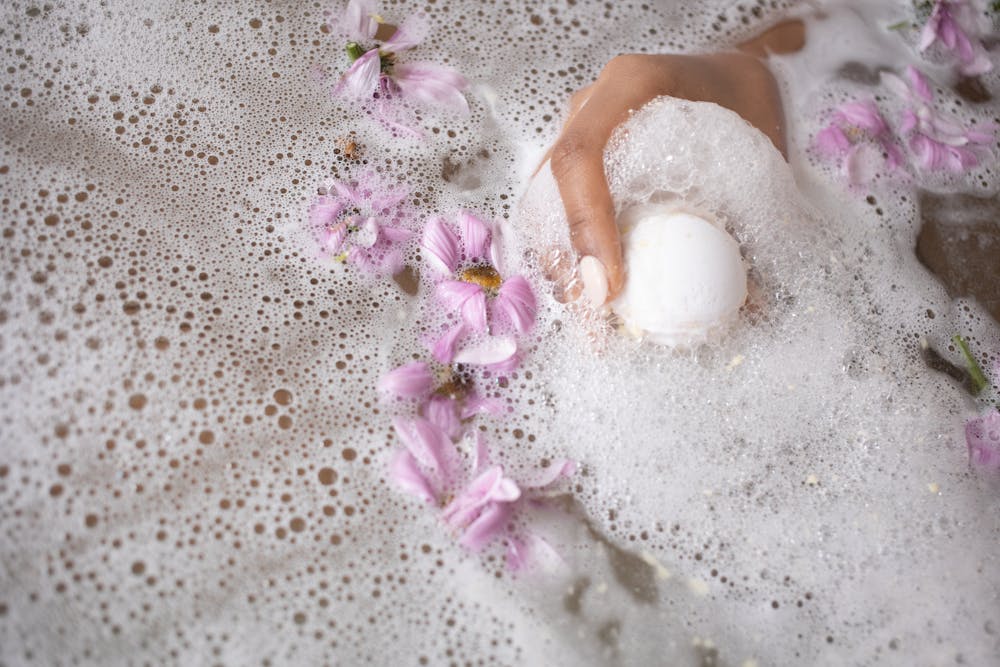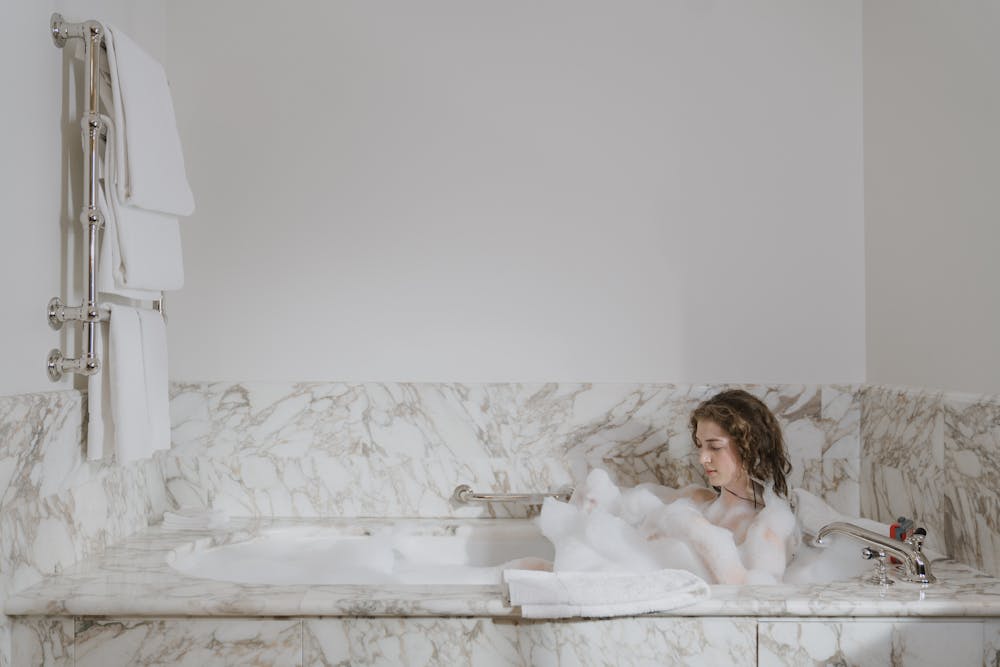The bathroom is a hot spot for changing the amount of toxins and artificial chemicals in your environment. As we wash our bodies, we often expose large amounts of skin to substances in the bathroom. The bathroom is also one of the places that requires regular domestic cleaning in London to ensure that germs are controlled. The following checklist is a starting point for making minor changes to improve your immediate environment and living more naturally.
How To Limit The Amount Of Toxins In The Bathroom
- Shampoo is very harsh – the essential cleansing ingredient is the same as the one used in dishwashing detergent. Instead of washing your hair with shampoo, use soap gel (this writer’s children used to refer to soap gel as “soap”). To make soap gel, chop up a bar of regular soap or save thin slivers of bar soap that are too flimsy to wash with, put them in a sturdy container and pour boiling water over them. Leave this to sit and cool to a translucent gel. Add a few drops of essential oil to the gel and decant it into a bottle. This mixture can be used for more than shampoo – it is also suitable for cleaning floors, washing cars and as liquid hand soap.
- Don’t use artificial air fresheners to remove toilet pongs. Instead, open the window and let fresh air do its work. Other stink-busters include burning matches, candles or incense (which burns the methane responsible for the stink) or making your air freshener from essential oil and plain water.
- Fluoride in the toothpaste is dubious. Switch to a no-fluoride brand or clean your teeth the old-fashioned way using table salt or baking soda (have a glass of water on hand – both taste pretty strong). If you need to cut down on your sodium intake (and thus need to avoid salt and soda) and can’t afford no-fluoride toothpaste, use only a tiny amount of regular toothpaste – a blob the size of a pea is ample for an adult; a mere smear for children.
- Avoid bubble baths if you have sensitive skin. Other ways to make baths fun, luxurious, and natural are to add homemade bath salts, bath oils, or bath vinegar. Mix the oil/salt/vinegar with essential oil and leave it to stand for a week or so before using (but you can use it immediately). Or imitate the voluptuous Cleopatra and add milk to your bath.

Natural Alternatives For Bathroom Cleaning
- You do not need to pour large amounts of disinfectant down the toilet to kill germs. The next time someone uses the toilet, all this disinfectant will flush away down the drain. Use vinegar, salt, tea tree oil, or vodka to wipe around the toilet seat and rim, and elbow grease to remove everything else inside the bowl.
- For women: menstruating is messy, but you should avoid flushing sanitary products down the lavatory. If they don’t block your toilet, they will cause further problems. They also cause a waste problem if you put them in the bin and then send them to a landfill. If you’re squeamish, the best option is to avoid using panty liners daily (you can wash your underpants, can’t you?) and use cotton (preferably unbleached) tampons, which are biodegradable. Try washable, reusable products such as the Mooncup for the less squeamish.
- Baking soda is the best thing for cleaning the bath and basin, as it cleans off the dreaded grey ring around the tub, removes soap scum and gets the taps sparkling. It doesn’t scratch, and it rinses off easily.
- Vinegar kills mould and is excellent for cleaning glass and shower doors. It can also be used diluted as a hair rinse, a skin toner, or even a deodorant. Add essential oil for extra antibacterial properties and a pleasant smell.
- Conserving water and caring for the environment is part of living naturally. The bath is one of the best sources of “grey water” available and is easy to move around to the garden or wherever else you want it – use a bucket to move it or siphon it out into the garden. Limit your baths – a quick shower is all you need for everyday washing. Keep oversized hot baths as a treat and share the water.

How To Incorporate Natural Bathtime Treats
One of the good bits the movie version of Lord of the Rings left out was Tolkien’s poetry. One poem that appears in the early parts of the book is a favourite song that hobbits sing in the bath. It begins, “Sing hey for the bath at the close of day. That washes the weary mud away. A loon is he who will not sing. O Water Hot is a noble thing!” The poem then goes on to celebrate the joy of hot baths.
And Tolkien is correct – there is nothing quite like a good hot bath to relax, soothe, and get you clean. As another poet, Sylvia Plath, said: “There must be quite a few things that a hot bath can’t cure, but I don’t know many of them.” Any good hot bath is a good bath, but some things make a bath even more luxurious. Best of all, you can make these yourself. They also make good gifts.
Salt in the bath helps cleanse the skin more deeply and stops your skin from getting that water-wrinkle effect more quickly. Sea salt is best, as it has other minerals apart from salt. And if it’s scented, all the better. To make your own fragrant and coloured bath salts, take ordinary sea salt or any cooking salt, add a few drops of food colouring (the more you add, the more intense the colour will be) and some fragrant or essential oils. Put this in a glass jar and shake it together until the colour has dispersed through the salt. It’s that easy! Add about a tablespoon or so to your bath – or more! As you know, salt could be used to make your own natural domestic cleaning London product.
To make a jelly-like bath goop popular with children, combine two tablespoons of gelatine and 1 cup shampoo with a cup of boiling water. You can add food colouring. Leave it to set. To make this “special” and fun for children (or your inner child), add things into the goop after half an hour (before it has fully set). Glitter is a charming addition, although it may leave a few sparkles in hair (but is that such a bad thing?). For boys with an obsession with things gross and disgusting, putting plastic worms, bugs, or spiders is disgusting, but it still gets them clean.
Bath bags are used to scrub the skin and add things into the bath that are good for the skin. These are simply bags that are tied shut and are filled with things. You can use old pantyhose as a bath bag – cut off the foot and knot it shut (not too tight a knot if you plan to reuse the “bag”). Old flannels also work – these are even better as exfoliants. As a base for any bath bag, use rolled oats. Oats are a beautiful skin softener as well as an exfoliant. You can even use leftover porridge in a bath bag, but don’t give this one as a gift. You can add dried herbs, essential oils, milk powder, or any combination to the rolled oats. Experiment to find your favourites. Lavender (oil or flowers) is supposed to be relaxing. A bath bag can only be used once or twice at most –after use, throw the contents of the bag out and wash the bag well before reusing.
Bath bombs fizz deliciously in the bath. Make these from a combination of tartaric acid, bicarbonate of soda and powdered starch in the ratio of 1:1:½ and some essential oil you choose. Mix well together, add a few drops of food colouring, then slowly add oil until the mixture is of the right consistency to be made into balls. Then shape them – round ones are easiest, but you can do whatever you fancy. Leave the bath bombs to set – this can take up to three weeks. Then drop them into your bath whenever you fancy. Store them in an airtight jar.

